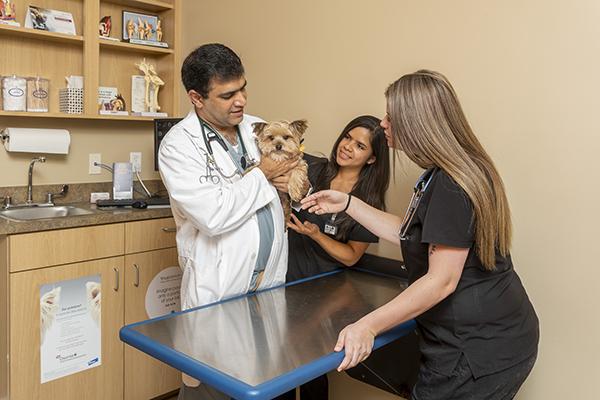From chocolate to garlic, there are many human foods that are toxic to dogs and could make your beloved pet ill if consumed. Onions are another one of these foods that you should prevent your dog from eating in order to keep them healthy. Unfortunately, no matter how vigilant you are about keeping dangerous foods away from your dog, they may still accidentally eat some.
So, what should you do if your dog eats onions?
Step #1
Determine How Much Onion Your Dog Consumed
Onions are toxic to dogs, but only in certain amounts. If you have a large dog that only ate a minimal amount of onion, for example, then you may not need to do anything other than keep an eye on them. If a small dog ate a larger amount of onions, by contrast, you might need to schedule an emergency vet visit.
How much onion can a dog safely eat?
Onions are typically safe for up to 0.5% of the dog’s body weight.
What Parts of an Onion Are Toxic to Dogs?
Every part of an onion is toxic to dogs. This includes the juice, leaves, and stem. Even powders made from processed onions are toxic. The same applies to all other members of the allium family, from leeks and shallots to garlic and chives. Dogs shouldn’t consume any part of any of these foods. Whether an onion is cooked or raw makes no difference - all onions are equally toxic to dogs.
Step #2
Look for Symptoms of Onion Toxicity in Your Dog
If you know that your dog ate more than the 0.5% limit of onions, then take your dog to the vet right away. If you’re not sure how much they ate or know that it was less than 0.5% of their body weight, then keep an eye on your dog and look for these symptoms:
- Diarrhea
- Vomiting
- Lethargy
- Mouth irritation
- Panting too much
- Collapsing
- Sensitive stomach
- Reddish urine
- Weakness
- Pale gums
How long do I need to watch my dog?
You should monitor your dog in the hours after eating the onions.
What Is Onion Toxicity?
Onion toxicity is also known as onion poisoning. It occurs in dogs and cats when they ingest onions in sufficient quantities. Onions, along with other members of the allium family like garlic, leeks, shallots, and chives, contain a compound called N-propyl disulfide.
Step #3
Take Your Dog to the Vet
If your dog ate more than 0.5% of their body weight in onions, skip Step #2 and take them straight to the vet. You should also do this if you notice any signs of onion toxicity in your dog, especially if your dog is experiencing the final two symptoms: pale gums and a racing heart. These two symptoms indicate that the toxicity has progressed to such a stage that it’s life-threatening.
Is onion toxicity in dogs an emergency?
Onion toxicity in dogs can be life-threatening, so if you know your dog ate onions or if you see signs of onion toxicity, take your dog to the emergency vet immediately.
How Quickly Should You Take Your Dog to the Vet?
Speed matters. Onion toxicity can be fatal and the longer it’s left untreated, the worse it can get. This means that the faster you can get your dog to the vet, the more treatable the condition will be.
Step #4
Treat Your Dog’s Onion Toxicity
Once your dog is at the vet, it’s time to treat the onion toxicity. This may involve your veterinarian inducing vomiting to get the onions out of your dog’s system faster. Your vet will also provide other supportive care as needed to treat your dog while they wait for healthy red blood cells to replace the damaged ones.
How is severe onion toxicity treated?
In the most severe cases of onion toxicity, a dog may need a blood transfusion from a healthy donor.
How Do Onions Harm Dogs?
In dogs, N-propyl disulfide attaches to the oxygen molecules within the red blood cells. This not only reduces the blood cells’ ability to carry oxygen but also causes the dog’s body to view those blood cells as foreign invaders. This causes hemolysis, a process in which your dog’s body would destroy those red blood cells, resulting in anemia.

